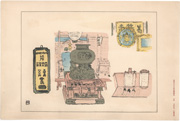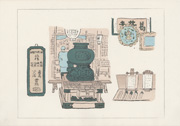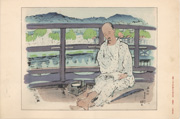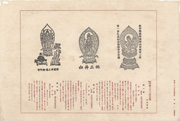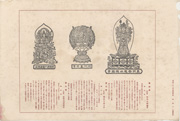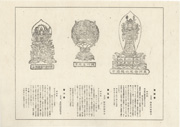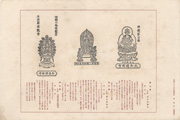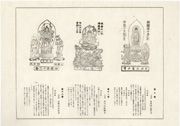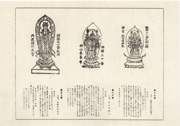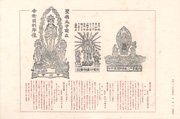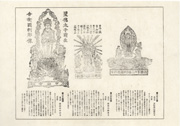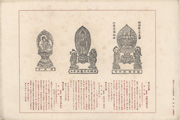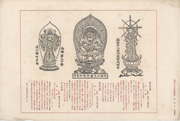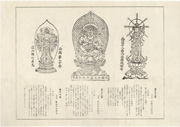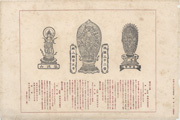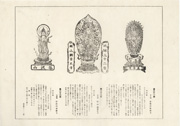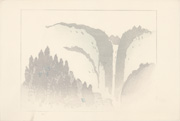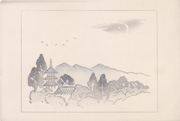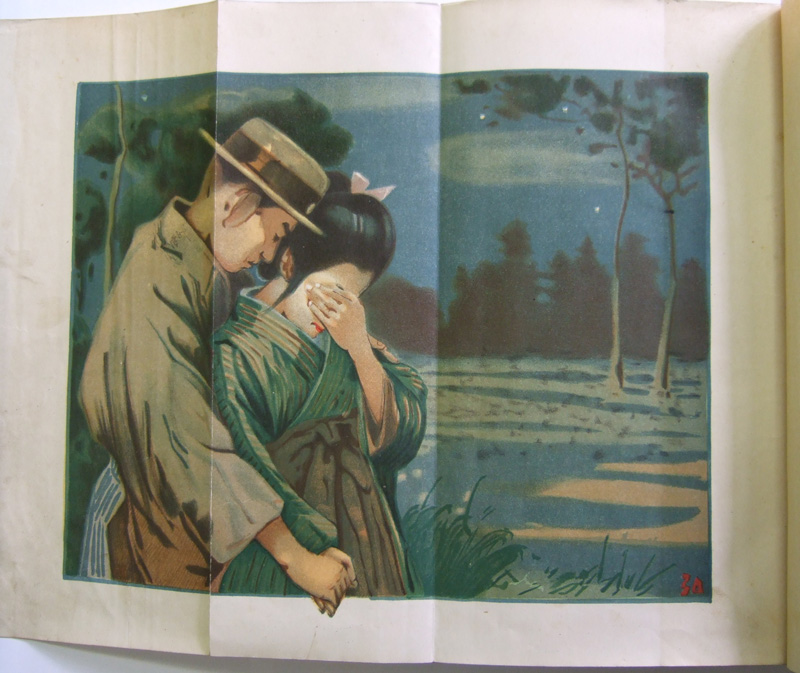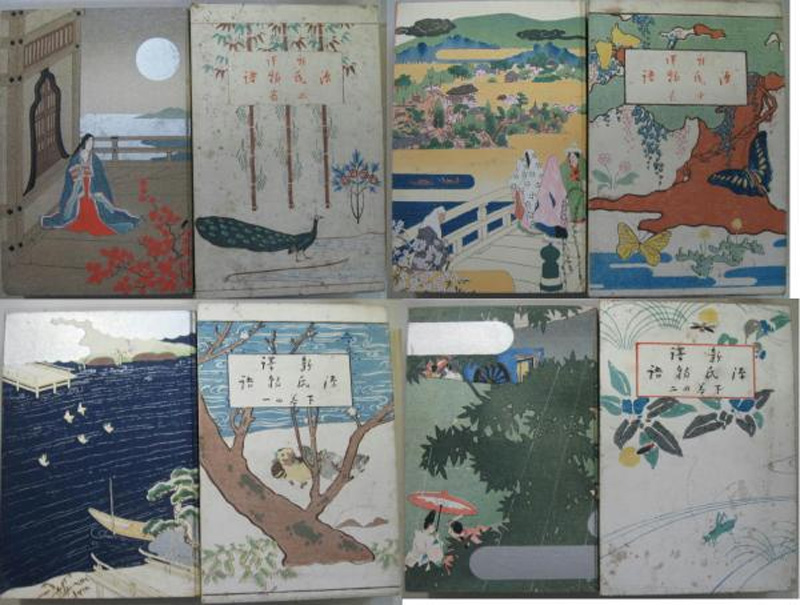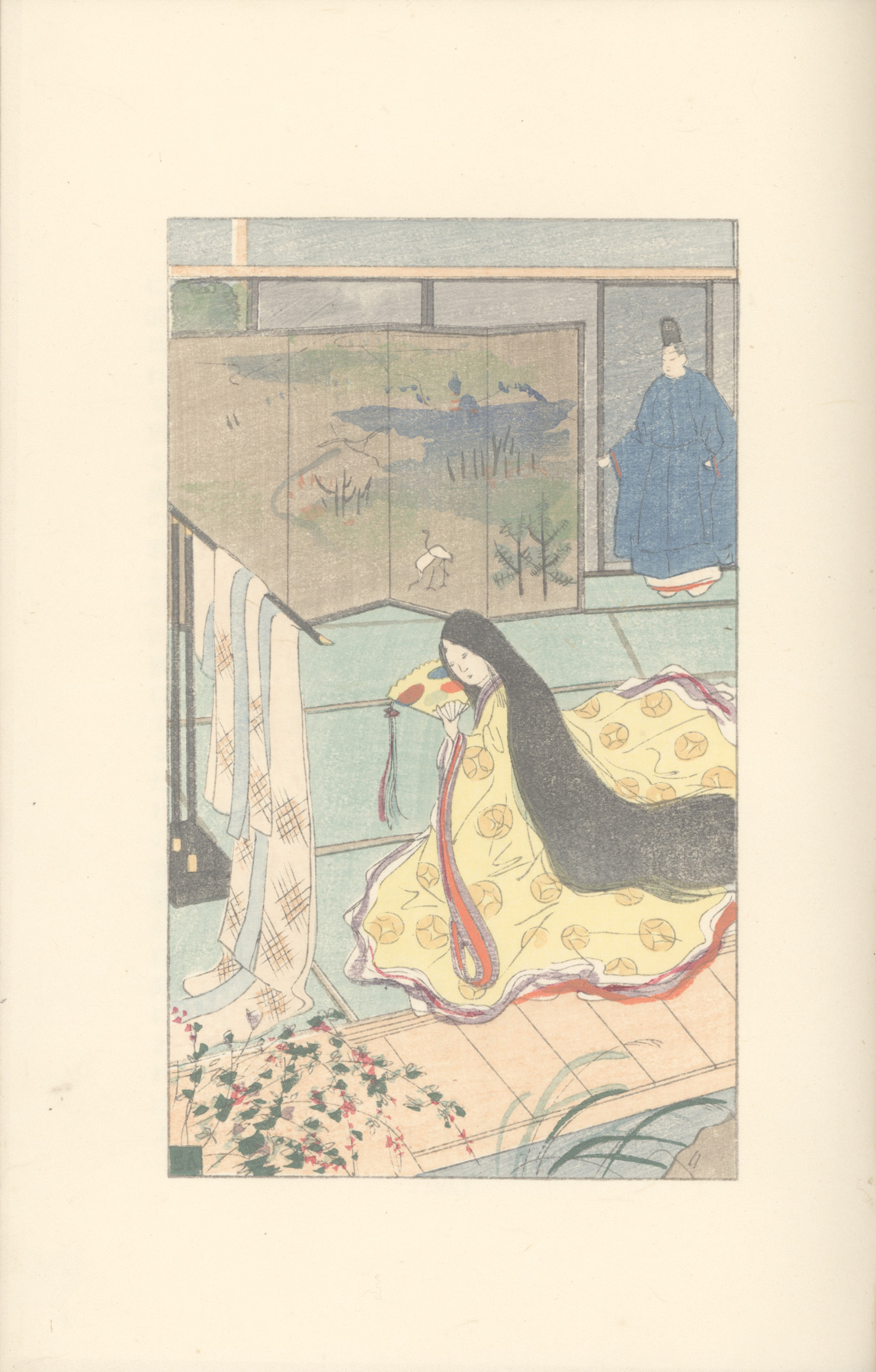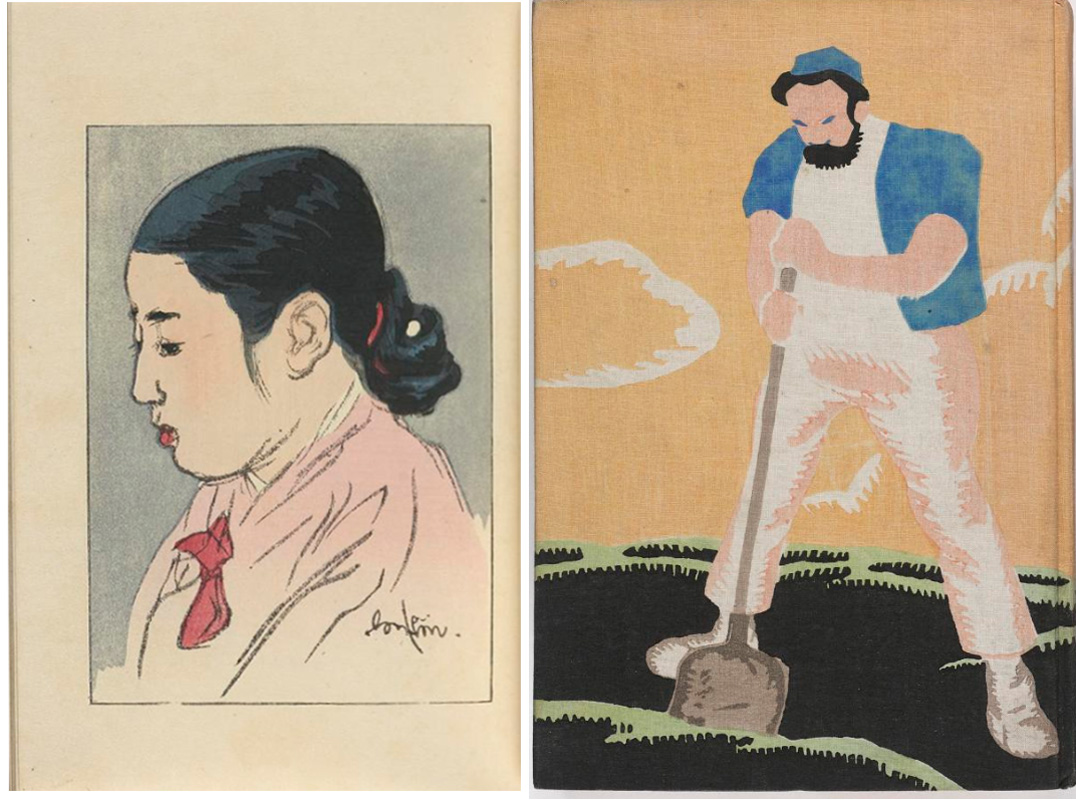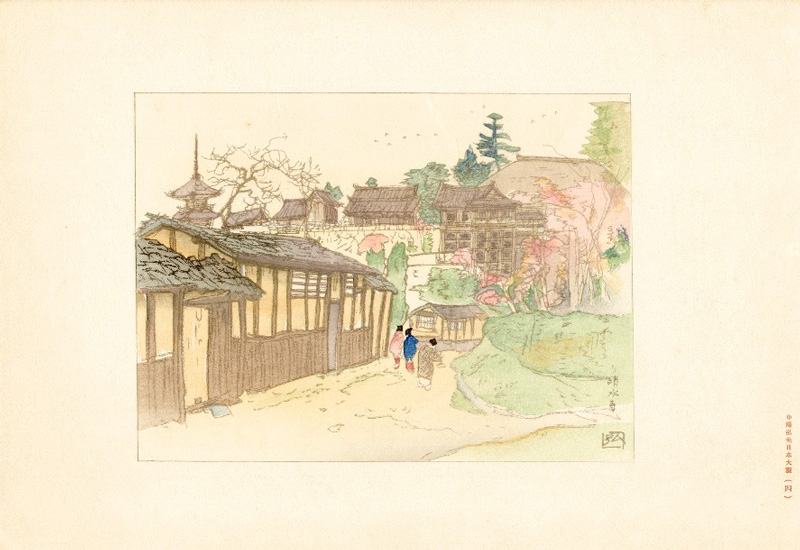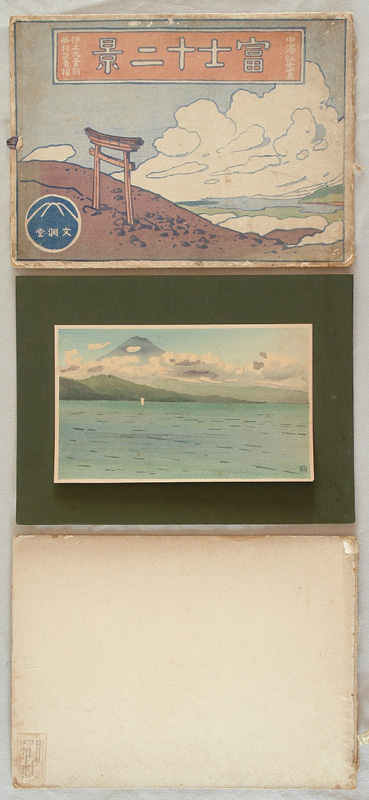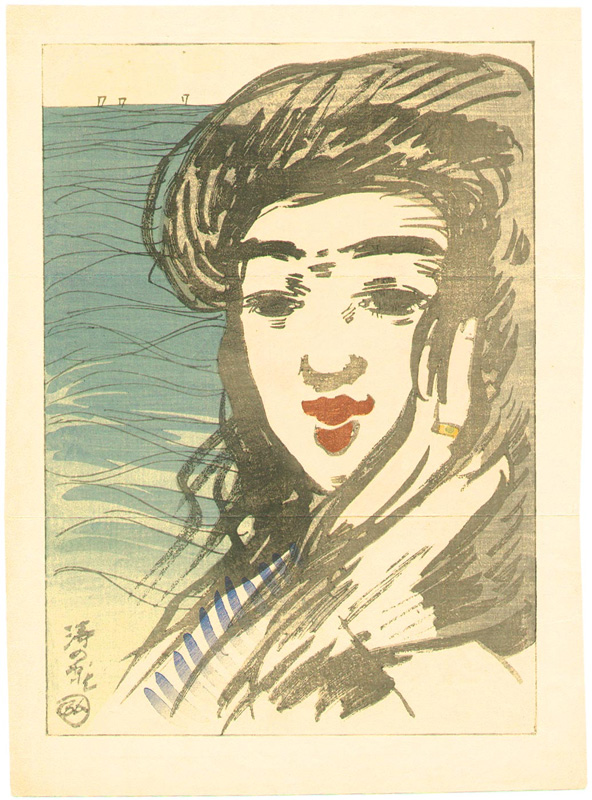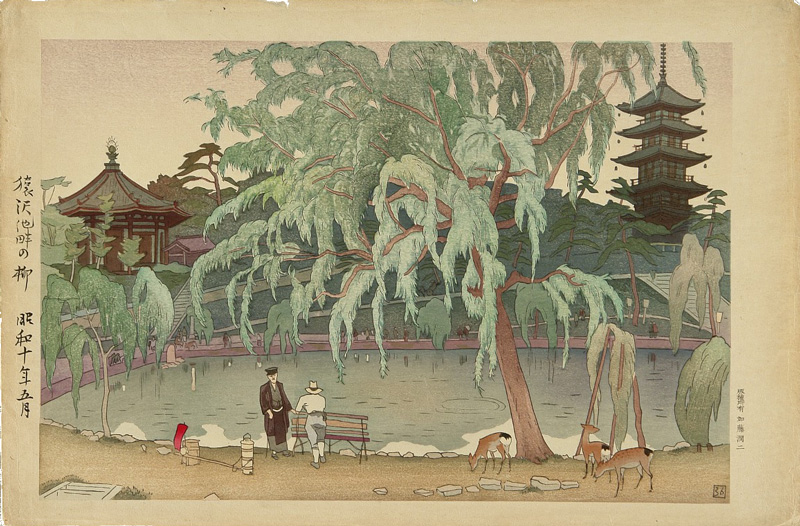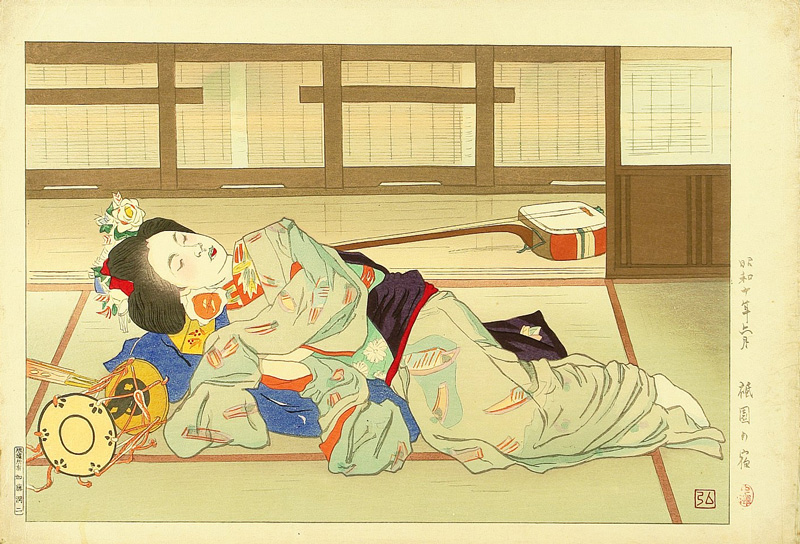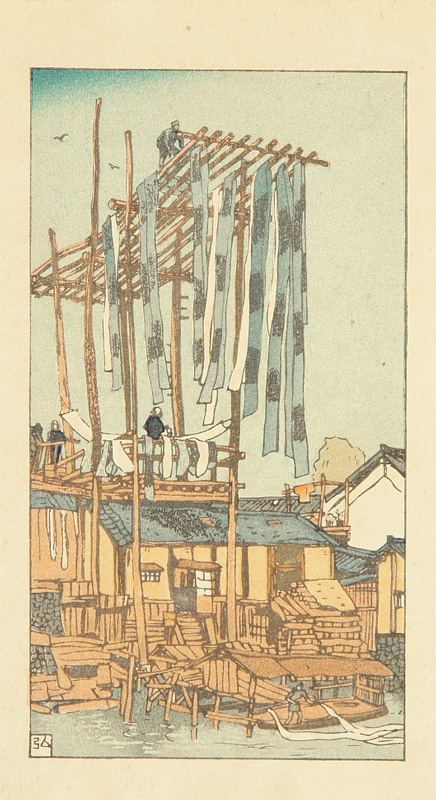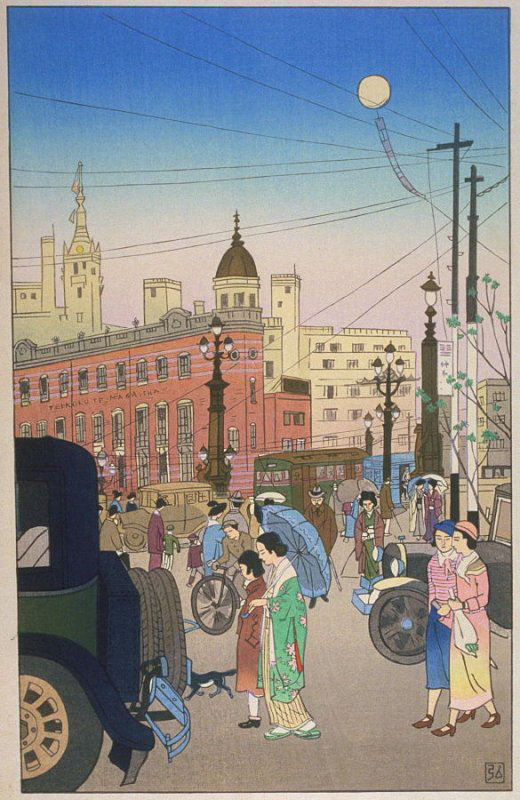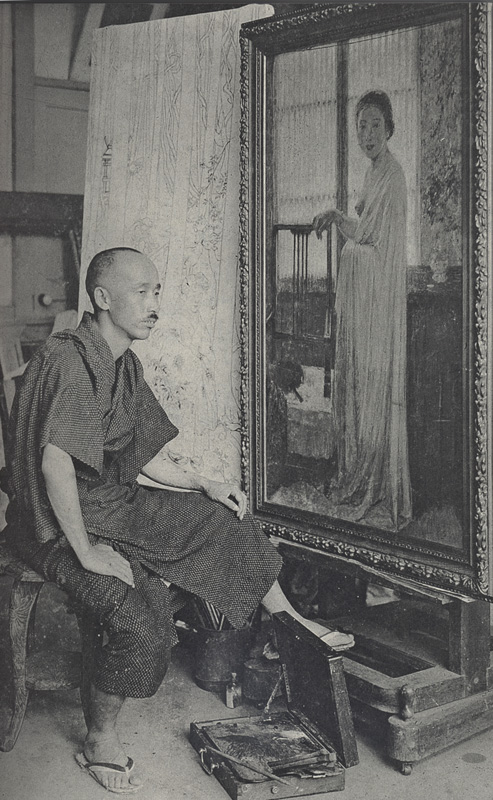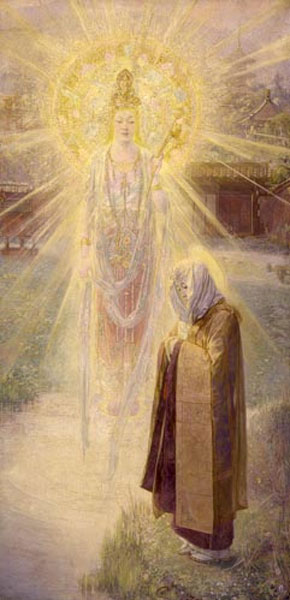Prints in Collection
Kinai kenbutsu
Shin'yaku Genji monogatari
Shin'yaku Genji monogatari, chūkan
1912
IHL Cat. #2289
Shin'yaku Genji monogatari, gekan no ichi, 1913
IHL Cat. #2290
Shin'yaku Heike monogatari
Shin'yaku Heike Monogatari, jōkan,
1914
IHL Cat. #2220
Picture Album of the Thirty-Three Pilgrimage Places of the Western Provinces
Prints by Nakazawa Hiromitsu
Table of Contents (front), 1925
IHL Cat. #2414.01
Gasan (words by Sasaki Nobutsuna), 1925
IHL Cat. #2413.06
Gasan (words by Nakazawa Hiromitsu), 1925
IHL Cat. #2413.07
IHL Cat. #2413.08
Nachi-san (Seiganto-ji, temple 1), 1925
IHL Cat. #2413.09
Kimii-san (Kimii-dera, temple 2), 1925
IHL Cat. #2413.10
Kokawa-dera (temple 3), 1925
IHL Cat. #2413.11
IHL Cat. #2413.12
Fujii-dera, (temple 5), 1925
IHL Cat. #2413.13
Tsubosaka-dera (Minamihokke-ji, temple 6),
1925
IHL Cat. #2413.14
Oka-dera (temple 7), 1925
IHL Cat. #2413.15
Hase-dera (temple 8), 1925
IHL Cat. #2413.16
Mimuroto-ji (temple 10), 1925
IHL Cat. ##2413.18
Kami Daigo-ji, (temple 11), 1925
IHL Cat. #2413.19
Kami Daigo-ji, (temple 11), 1946
(orig. 1925)
IHL Cat. #1859
Iwama-dera (temple 12), 1925
IHL Cat. #2318 and #2413.20
IHL Cat. #2320 and #2413.21
Mii-dera (temple 14), 1925
IHL Cat. #2413.22
Imakumano (Kannon-ji, temple 15), 1925
IHL Cat. #2244 and #2413.23
Imakumano (Kannon-ji, temple 15), 1946 (orig. 1925)
IHL Cat. #1858
Kiyomizu-dera (temple 16), 1925
IHL Cat. #2413.24
Rokuharamitsu-ji (temple 17), 1925
IHL Cat. #2413.25
Rokkaku-dō (Chōhō-ji, temple 18), 1925
IHL Cat. #2413.26
Kōdō (Gyōgan-ji, temple 19), 1925
IHL Cat. #2413.27
Yoshimine-dera (temple 20), 1925
IHL Cat. #2319 and #2413.28
Yoshimine-dera (temple 20), 1946
(orig. 1925)
IHL Cat. #2251
Anao-ji (temple 21), 1946 (orig. 1925)
IHL Cat. #1857
IHL Cat. #2413.31
(orig. 1925)
IHL Cat. #1855
IHL Cat. #2413.33
IHL Cat. #2413.34
Hokke-zan (Ichiō-ji, temple 26), 1946
IHL Cat. #2538
IHL Cat. #2250
IHL Cat. #2315 and 2413.42
-intentionally left blank-Picture Album of the Thirty-Three Pilgrimage Places of the Western ProvincesPrints by Other Artists
Appendix 1 (temples 1, 2 and 3), 1925
(sketches of honzon not credited)
IHL Cat. #2413.47
(sketches of honzon not credited)
IHL Cat. ##2413.48
Appendix 2 (temples 4, 5 and 6), 1946
(sketches of honzon not credited)
IHL Cat. #2323
Appendix 3 (temples 7, 8 and 9), 1925
(sketches of honzon not credited)
IHL Cat. ##2413.49
Appendix 4 (temples 10, 11 and 12), 1925
(sketches of honzon not credited)
IHL Cat. #2413.50
Appendix 4 (temples 10, 11 and 12), 1946
(sketches of honzon not credited)
IHL Cat. #2324
Appendix 5 (temples 13, 14 and 15), 1925
(sketches of honzon not credited)
IHL Cat. #2371 and #2413.51
Appendix 6 (temples 16, 17 and 18), 1925
(sketches of honzon not credited)
IHL Cat. #2372 and #2413.52
(sketches of honzon not credited)
IHL Cat. #2370 and #2413.54
IHL Cat. #2413.55
Appendix 10 (temples 28, 29 and 30), 1925
(sketches of honzon not credited)
IHL Cat. #2413.56
Appendix 10 (temples 28, 29 and 30), 1946
(sketches of honzon not credited)
IHL Cat. #2327
Appendix 11 (temples 31, 32 and 33), 1925
(sketches of honzon not credited)
IHL Cat. #2413.57
Appendix 11 (temples 31, 32 and 33), 1946
(sketches of honzon not credited)
IHL Cat. #2328
IHL Cat. #2413.58
Nara, 1925
IHL Cat. #2413.59
Biography
Sources: website of the Independent Administrative Institution Nation Institutes for Cultural Heritage, Tokyo National Research Institute for Cultural Properties http://www.tobunken.go.jp/materials/bukko/9159.html and as footnoted.
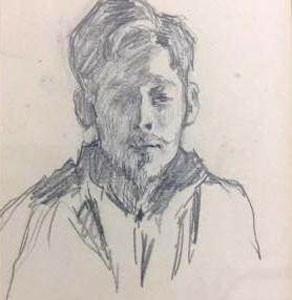 self-portrait in pencil, undated | Nakazawa Hiromitsu 中沢弘光 (中澤弘光) (1874-1964) Trained as a Western-style (yōga) painter, Nakazawa is, perhaps, best remembered for his illustrations appearing in novels, sketch-tour books, newspapers and magazines. He is credited with being among the first artists to use novels as a vehicle for his illustrations, the first of which appeared (as a lithograph) in the third volume of Kosugi Tengaiin’s 1903 novel, Makaze Koikaze (Winds of demon and love), a story of a modern upper-class Japanese schoolgirl.1 Along with a number of other Western-style artists, Nakazawa saw the possibilities in the novel for Western-style illustrations. Undoubtedly, his most famous book illustrations (rendered as woodblock prints) were created for Yosano Akiko’s (1878-1942) 1913 translation into modern Japanese of Genji monogatari, titled Shin'yaku genji monogatari (A New Translation of The Tale of Genji).2 “[P]ublished by Kanao Bun’endō with breathtakingly gorgeous woodblock-printed covers and end-pieces and fifty-four* illustrations by the Western-style painter and illustrator |
Nakazawa Hiromitsu (1874-1964), [it] received positive reviews in major literary magazines and newspapers…”3
* the actual number of woodblock illustrations is fifty-seven.
Illustration (lithograph) by Nakazawa appearing in Makaze Koikaze by Kosuki Tengaiin, 1903
The four volumes with slipcovers of Shin'yaku genji monogatari.
The cover designs are by Nakazawa as are all the woodblock illustrations
in the volumes, such as the above illustration from Chapter 50 Azumaya.
Early Training
Born in Tokyo’s Shibaura district into a samurai family, Nakazawa lost his parents at a young age and was raised by his grandmother. As a teenager, he studied at Soyama Sachihiko’s (1859-1892) Daikōkan Western-style painting studio, under the tutelage of Soyama and Horie Moriaki (1852–1932). Along with fellow artists Okada Saburōsuke (1869-1939), Wada Eisaku (1874-1959) and Miyake Katsumi (1874-1954) he was to “inherit” the school upon Soyama’s death.4 In 1896, at the age of twenty-two, Nakazawa entered the Western Painting Department of the Tokyo School of Fine Arts studying under Kuroda Seiki (1866-1924), graduating in 19005. While studying with Seiki he participated in the 1896 founding of the Hakubakai 白馬会 (White Horse Society), dedicated to promoting plein-air French academic painting, contributing woodblock prints to their magazine, Kōfūm.
Sketch-Tour Genre
Source: "Sketch-tour Books and Prints of the Early Twentieth Century" by Scott Johnson, appearing in Andon 37, June 1991
In 1905, Nakazawa began his work both as author and illustrator in the very popular sketch-tour genre, ultimately becoming its most prolific artist. The genre, which saw artists traveling throughout the country and the Japanese colonies sketching and writing about the places visited, lasted until 1920. Nakazawa’s contribution to this genre included:
Gojūsantsugi suketchi (Sketches of the Fifty-Three Stations) - published in 1905 and containing five tipped in color woodblock prints designed by the artist (pencil sketches with added color wash) and produced by the famous woodblock carver Igami Bonkotsu (1877-1933) and the well-established printer Nishimura Kumakichi (1861-c.1941).
Nihon Meishō Shasei Kikō (Sketches and Travel Notes on Japanese Sights) - five volumes published between 1906 and 1912 by Yamada Kyūrō using the work of multiple artists including Nakazawa and containing 55 lithograph and woodblock illustrations.
Kinai kenbutsu (Scenes of the Inner Provinces) - three volumes published by Kanao Tanejirō (1879-1947) (the publishing house Bunendō) in 1911-1912, with all but one of the woodblock print illustrations designed by Nakazawa with woodblock carving by Igami and printing by Nishimura. (See this collection's book IHL Cat. #2034.)
Bungei Chiri Tōkaidō Gojūsantsugi (The Topography of the 53 Stations of the Tōkaidō in Words and Pictures) - published by Yokohama Kendō (1871-1943) in 1911 using the work of multiple artists including Nakazawa.
Shin Nihon kenbutsu (Scenes of New Japan) - published by Kanao Bunendō in 1918 showing scenes from the growing Japanese Empire using the work of multiple artists including Nakazawa.6
right: cover of Shin Nihon kenbutsu, artist unknown
left: color woodblock by Nakazawa from Shin Nihon kenbutsu
Kinai Angya (Pilgrimage to Kinai) - published by Kanao Bunendō in 1919 showing scenes from the five kuni in the immediate vicinity of Kyoto created by multiple artists including Nakazawa.
With the demise of the sketch-tour book, partially due to the rising popularity of shin hanga single sheet landscape prints by artists such as Kawase Hasui (1883-1957), Bunendō began issuing series of single-sheet woodblock prints depicting artist travels, with minimal accompanying text, thereby putting primary emphasis on the prints. Continuing to work with Bunendō, Nakazawa would go on to design the 1922 fifty-print series titled Nihon Taikan (A Compendium of Japan) and the 1925 series Saigoku sanjūsan kasho junrei gakan (Pictures of a Pilgrimage to the Thirty-Three Temples in the Western Provinces Saigoku).7
Kiyomizu-dera (Kiyomizu Temple in Kyoto) Sheet #4 from the series Nihon Taikan (A Compendium of Japan), published by Bun'endō in January 1922.
Carver: Okada Seijirō. Printer: Nishimura Kumakichi
To see the complete series go to https://pulverer.si.edu/node/869/title/1
Smithsonian Institution Freer Gallery of Art
Other Illustrations
In addition to illustrations for novels and sketch-tour books, Nakazawa provided artwork for literary magazines including Myōjō 明星 (Morning Star), an influential poetry magazine started by the poet Yosano Tekkan (1878–1942), published between February 1900 and November 1908. During that same period he created a large number of designs for postcards including a 1905 series of deluxe woodblock printed postcards titled Beautiful women and the senses for the publisher Sunbikai in which Nakazawa combined more traditional imagery with European Art Nouveau motifs.8
Beautiful women and the senses, 1905
woodblock printed postcards
Museum of Fine Arts, Boston 2002-1051, 1052, 1053, 1054, 1055, 1056
Woodblock Prints - A Sampling
| Miho no Matsubara yori Mitaru Fuji from the series Twelve Views of Mt. Fuji, 1907 publisher: Bunendō (source: Artelino.com) | Flower of the Wave (Nami no Hana) kuchi-e, c.1910 (source: Artelino.com) | Inn at Gion (Gion no yado), 1935 publisher: Katō Junji (source: Artelino.com) |
Dyer's House, Kinai kenbutsu 畿内見物, Vol. 3, 1911 (image source: Artelino.com) | Early Spring on Nihonbashi, c. 1925 (source: Fine Arts Museums of San Francisco 1998.120.26) | |
Painting
In addition to the artistic organizations noted above, Nakazawa founded the Kofūkai (Light and Wind Club) with Katsumi Miyake and Hisui Sugiura (1876-1965) in 1912 and the Japan Watercolor Painting Society (Nihon Suisaigakai) in 1913. After returning in 1924 from two years of travel in Europe, visiting France, England and Spain, he founded the Hakujitsu-kai, an organization of Western-style painters still operating today.
Awards and Recognition
Nakazawa was made a member of the Imperial Fine Arts Academy (帝国芸術院会 Teikoku bijutsuin) in 1930 and its successor, the Imperial Art Academy (帝国美術院会 Teikoku geijutsuin) in 1937, and in 1944 he became an Imperial Household Artist (Teishitsu gigeiin 帝室技芸員).9 After the war, he both exhibited in, and became an advisor to, the Nitten and in 1957 he became a “person of cultural merit” (Bunka kōrōsha).10 In May of 1964 he was given the 3rd Order of the Rising Sun.
Nakazawa passed away at the Nihon Medical University hospital in Tokyo Bunkyo Ward on September 8, 1964 at the age of 91.
Recent Exhibitions
Kichijoji Art Museum, Musashino, "Hiromitsu Nakazawa: Published Art and Sketches from the Meiji and Taisho Periods" 2018
"The accomplished artist Hiromitsu Nakazawa (1874–1964) provided artwork for literary magazines during the Meiji and Taisho periods, including the monthly Myojo, directed by the poet Akiko Yosano. This exhibition looks back on Nakazawa’s creative legacy with more than 200 rare works including sketches as well as printed and published pieces from the height of his career. Also displayed are examples of Nakazawa’s oil and watercolor paintings and a self-portrait by his teacher, the great painter Seiki Kuroda."11
"Hiromitsu Nakazawa (1874–1964) was a prominent Western-style painter in the Meiji through Showa eras who also produced outstanding works of design. This exhibition, Nakazawa’s first major retrospective, takes a comprehensive look at his art with major oil paintings, watercolors, sketches, and book designs, shedding light on little-known aspects of his career."12
Signature and Seals
 弘 Hiro |  |
1 the novel was serialized before being published in book form
2 Translation in Modern Japan edited by Indra Levy, Routledge, 2011, p. 243
3 Yosano was a poet, scholar and translator and her translation brought the ancient novel into contemporary colloquial language and made it into popular novel for the masses.
4 Meiji Western Painting,Arts of Japan 6, Minoru Harada, p. 28.
5 The school was founded in 1887 through the efforts of Ernest Fenollosa and Okakura Tenshin to combat the influence of Western art but by 1896 a Western art department was added.
6 to see the complete series go to https://pulverer.si.edu/node/487/title/1 Smithsonian Institution Freer Gallery of Art
7 originally published in 1925 and re-published in 1946, few prints are extant from the original edition.
8 Art of the Japanese Postcard: The Leonard A. Lauder Collection at the Museum of Fine Arts, Boston, Anne Nishimura Morse, J Thomas Rimer, Kendall H Brown, Museum of Fine Arts, Boston, 2004, p. 265.
9 an artist who was officially appointed by the Imperial Household Ministry to create works of art for the Tokyo Imperial Palace and other imperial residences.
10 an official Japanese recognition and honor which is awarded annually to select people who have made outstanding cultural contributions.
11 Tokyo Art Beat http://www.tokyoartbeat.com/event/2018/2B28.en
12 Tokyo Art Beat http://www.tokyoartbeat.com/event/2014/8CC3.en
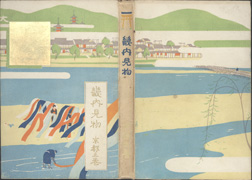
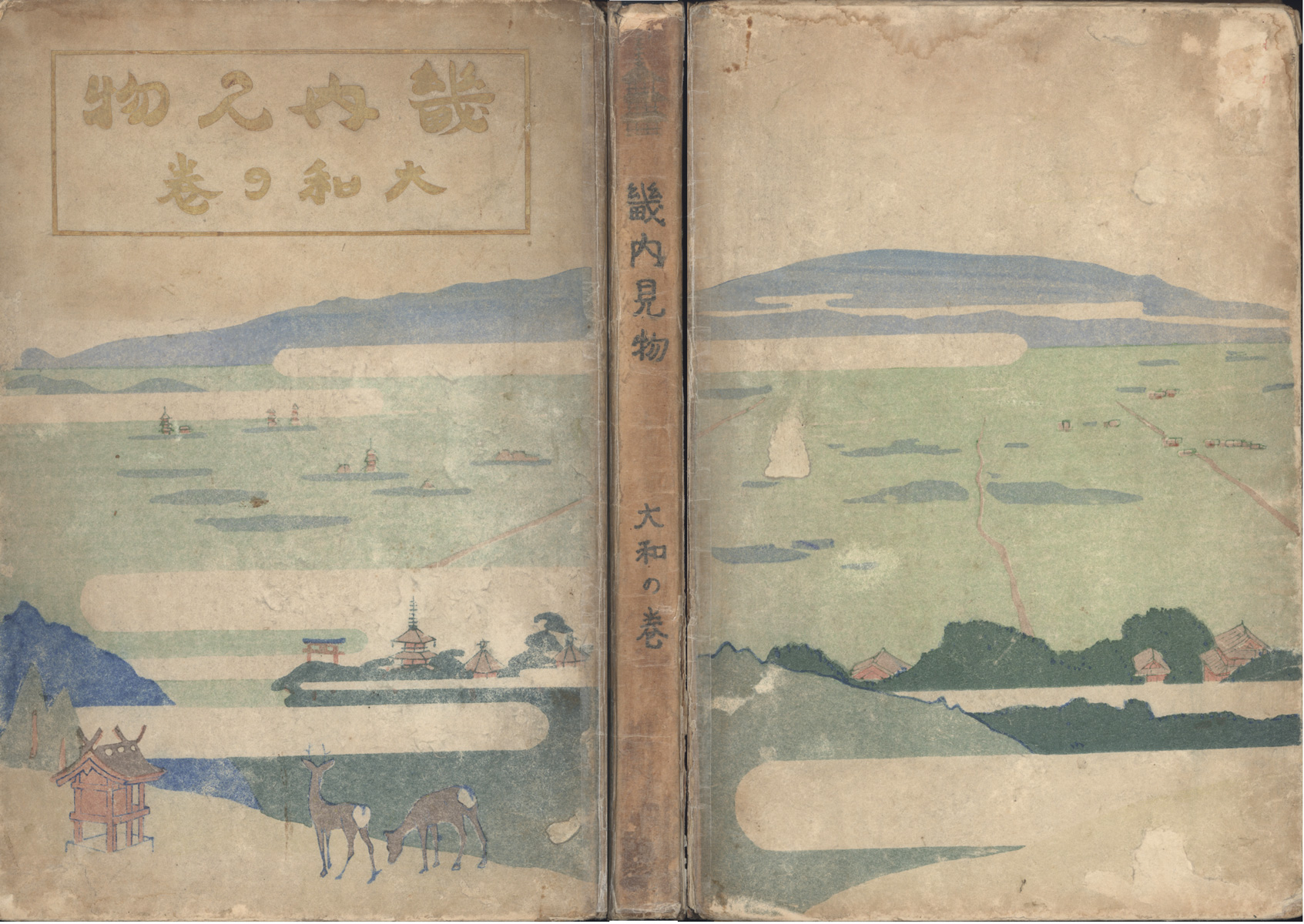
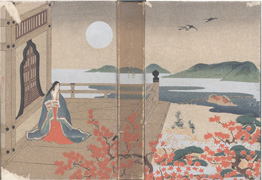
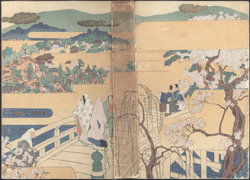
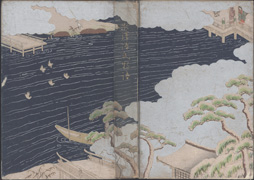

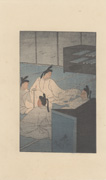

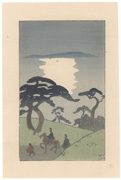
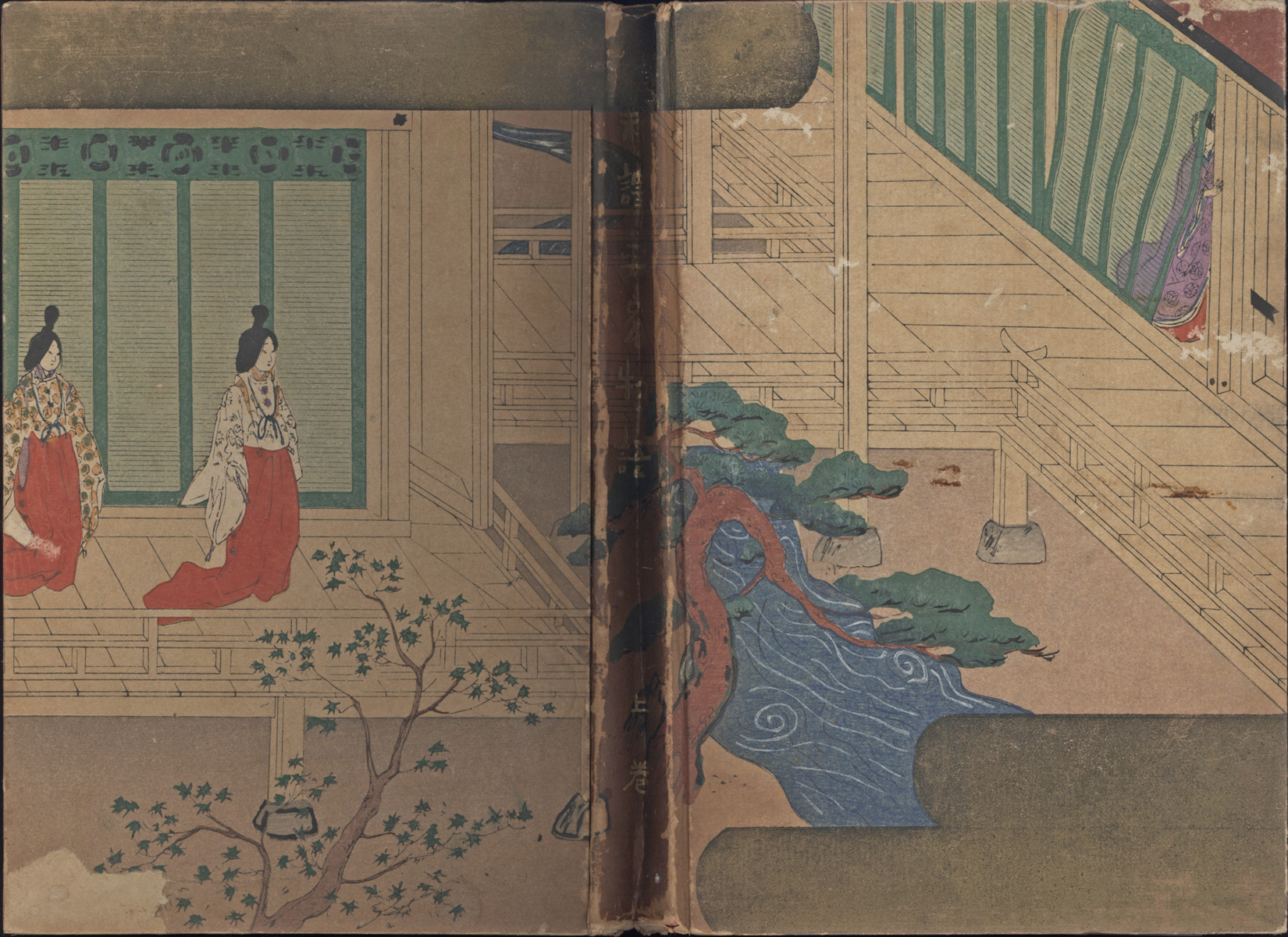
.jpg)

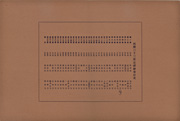

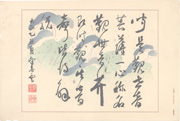
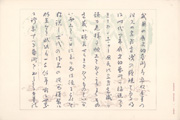
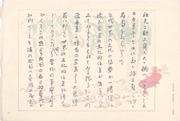
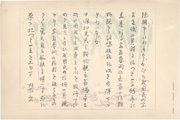

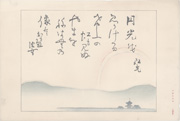
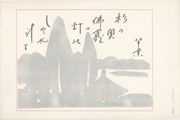
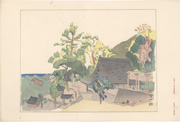

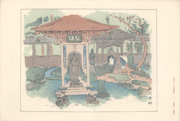

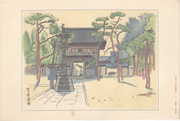
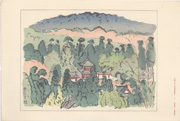
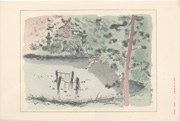
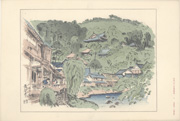
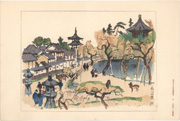
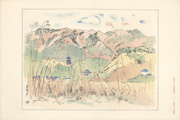
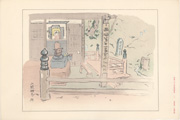

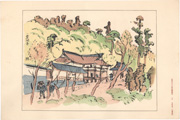
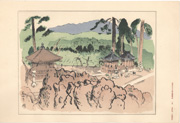
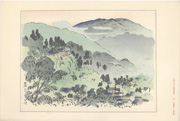

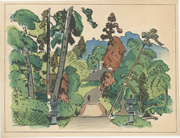
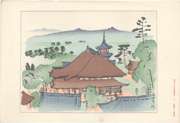
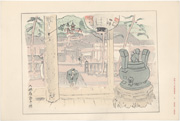
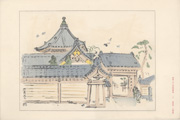

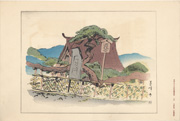
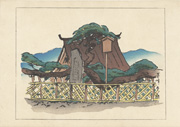

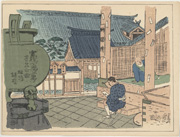
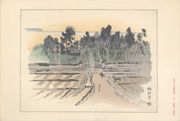
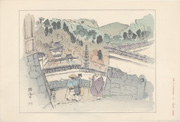
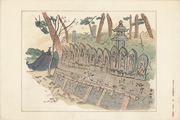



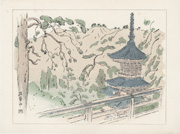
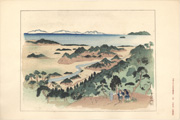
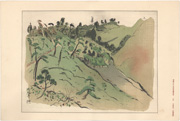
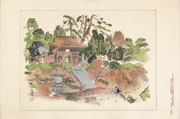

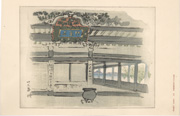
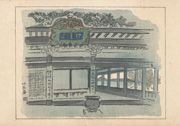
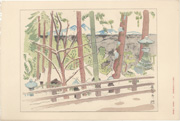
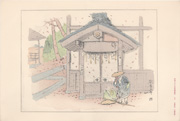
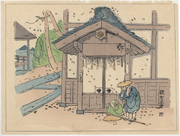
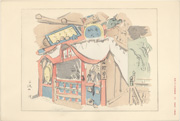
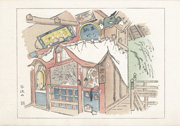
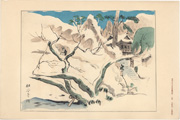
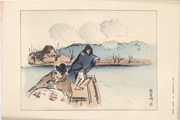
 ihl2463 thumb web.jpg)
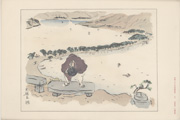
 194-695b77bd1c9db7dc.jpg)
